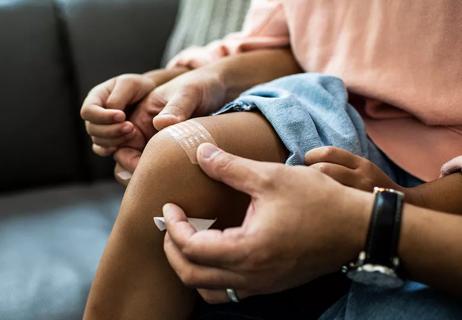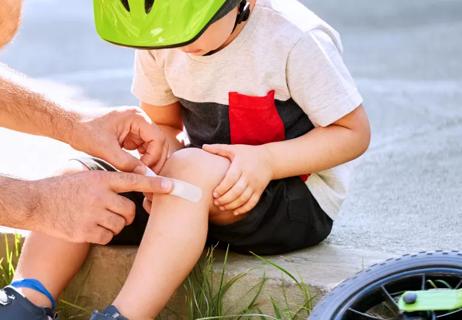The best tools and practices from a pediatrician

It’s a familiar situation for many parents: Your child is playing in the yard barefoot and comes in complaining that they stepped on something.
Advertisement
Cleveland Clinic is a non-profit academic medical center. Advertising on our site helps support our mission. We do not endorse non-Cleveland Clinic products or services. Policy
You take a look at their foot. Sure enough, you see a tiny splinter.
Should you grab the tweezers from the medicine cabinet, or take your child to urgent care to have it removed? Or does it even need to be taken out at all?
It’s especially important to have organic material — like a piece of wood or a thorn — removed as soon as possible, as it may become infected more quickly than inorganic material — like metal or glass — says pediatrician W. Kyle Mudd, DO. The splinter should be removed that day if possible, too.
Once you’ve determined that a splinter needs to come out, it’s time to decide if you’re the best person for the job. Most often, you’ll be able to save a trip to the doctor by removing it yourself. But Dr. Mudd suggests leaving it to the pros if:
Advertisement
While getting a splinter can hurt in the moment, there are some alternative ways of removing a splinter with a little less pain.
If the wound is small, pain-free and near the surface of the skin, it may be just a sliver that could eventually come out as the skin sheds. But a deeper, more painful splinter shouldn’t be left in due to the risk of infection. If a splinter is small and isn’t causing any pain or discomfort, it sometimes helps to wait until it rises to the surface of the skin. Then, try removing it with tweezers. Otherwise, be sure to take any necessary steps to remove it as soon as possible.
Advertisement
Regardless of how it’s removed, if your child gets a splinter, it’s important to make sure they’re up to date on their tetanus vaccine, to prevent a rare but possibly serious infection. The U.S. Centers for Disease Control and Prevention (CDC) recommends that children receive their childhood tetanus series, including the DTaP immunizations, at 2 months, 4 months, 6 months, 15 to 18 months and 4 to 6 years old, in addition to a Tdap immunization at 11 to 12 years old. A tetanus booster is required every 10 years after this to help boost waning immunity.
Advertisement
Learn more about our editorial process.
Advertisement

If the area is bleeding a lot or the wound is near your face or genitals, you likely need a specialist’s care

First, assess the seriousness of the wound, and then apply light pressure to stop any bleeding

Clean hands, sanitized tweezers and a soaking tub are key to removing some shards of glass

Quick action and proper care can make a big difference

The short answer from a plastic surgeon

Three common causes of chronic wounds

Combat summer learning loss and keep young brains engaged with low-pressure learning

Preschool age is typically between 3 and 5 — but readiness may matter more

Start having sex about 72 hours before ovulation, then at least every other day during your fertile window

Attachment theory suggests that your earliest relationships shape connections throughout your life

It isn’t a recognized mental health disorder, but research shows that problematic social media use can negatively affect your mental health, self-esteem and sleep